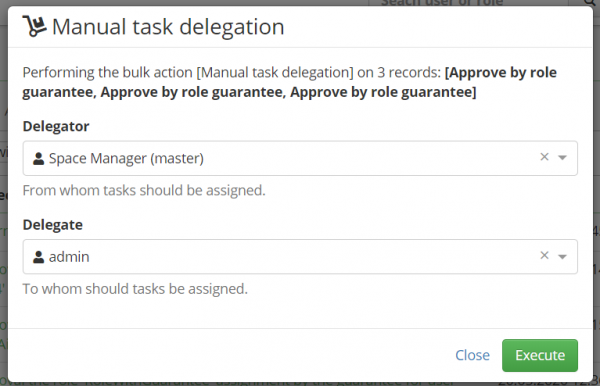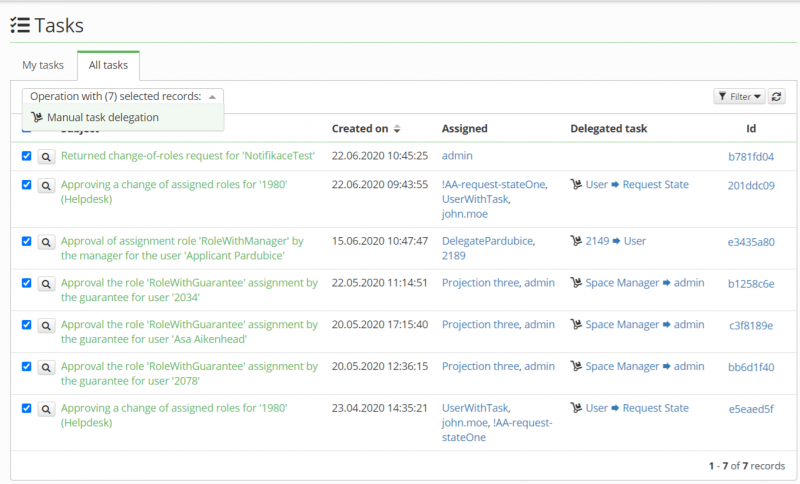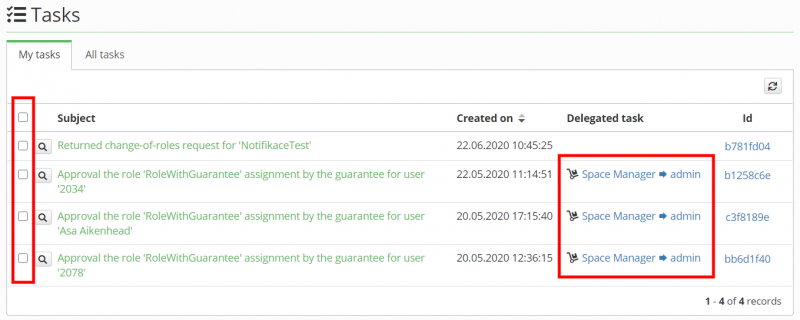This is an old revision of the document!
Delegation
Automatic delegation
Manual delegation
Manual delegation allows a user to reassign his tasks to someone else. Are available as a bulk operation on the agenda of assigned tasks.

Manual delegation can also be used in the administrator mode, where the user has the right to see all unresolved tasks, all users. In this mode, it must be clearly defined who is the delegator for the selected tasks. To do this, the administrator can use a filter, where he selects only one user whose tasks he wants to delegate. If this filter is used, the delegator will be pre-filled according to it after starting the bulk operation. The second option is to select the delegator manually.
Manual delegations use the standard delegation agenda. This means that if the bulk operation reassign a task, a delegation definition will be created corresponding to this reassing. This new definition will contain a delegator and a delegate, depending on the settings of the bulk operation. Next, a link will be created between the definition and the task being reassigned.
Within each task delegation, a notification is sent to the task delegate, which informs him of the new task.
This notification is sent to the topic: `core:delegationInstanceCreatedToDelegate`.


